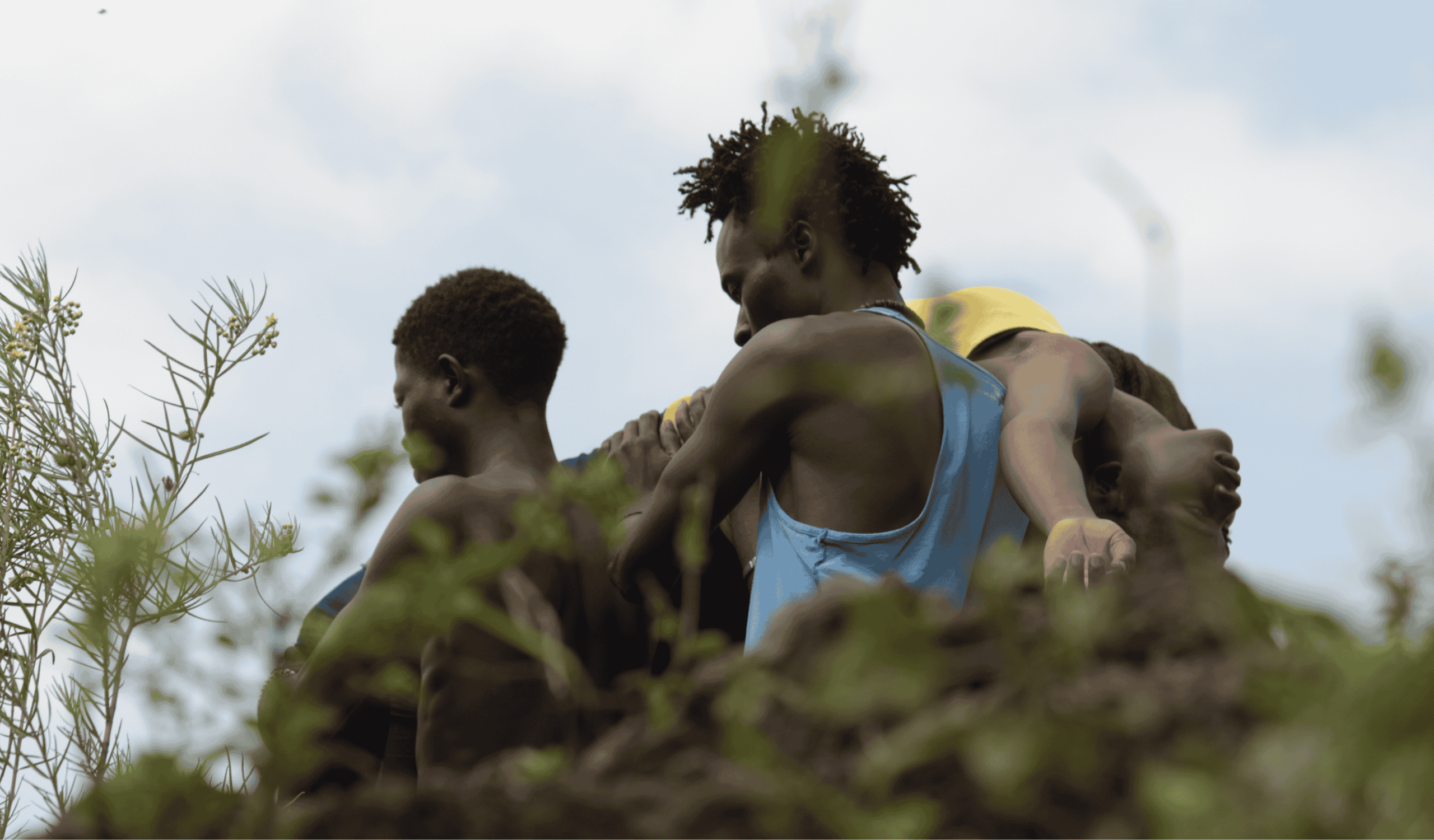FIDMarseille continues its collaboration with La Gaya Scienza, a venue for artistic and poetic exploration in Nice. The next event will be devoted to two films by Congolese (DRC) director Petna Ndaliko Katondolo: Matata (FID 2020) followed by Katasumbika (FID 2025). The screening will be followed by a discussion with the filmmaker, moderated by Claire Lasolle, programmer at FIDMarseille.
MATATA
Petna Ndaliko Katondolo
Democratic Republic of the Congo, United States, 2019, 37’
Other Gems, FID 2020
A woman poses. A man with a camera zeros in on her and takes a picture. But very soon, the shoot degenerates. Each click of the camera sounds like a machine gun. No-one speaks; the editing is disrupted, and with it, the images, the spaces and the timing. The woman escapes. In an abandoned building, a man, as mute as she is, shrinks from her gaze. It is he that the film now follows: he explores a museum exhibiting the history of Africa, its suffering and its external interferences.
Matata draws up an inventory of Africa and the legacy of its representations. Speech is confiscated, and the man and woman wander without ever being able to vocalise the violence that they were witness to or victim of. Right from the outset, photography, and with it, cinema, are as much a predatory technique as an instrument of beauty: ethnographic documents filmed by the coloniser, or historical images of those who played a part in decolonisation, now dead and neutralised in museums…
Faced with this history of exploitation, bodies resist. When speech is absent, music takes the floor, and choreography invades the living spaces – a group of young men improvises a dance in a jeep that’s stopped at the traffic lights, an exploration of ruins becomes an intricate ballet between people looking for each other, and even an ancient ceremonial dance is reconnected with concealed history. Or how, with a reifying gaze, the possibility of becoming the subject is apparent once again. (N.L.)
(Nathan Letoré)
KATASUMBIKA
Petna Ndaliko Katondolo
Democratic Republic of the Congo, United States, 2024, 38’
International Competition, FID 2025
Coltan, also known as blood ore, is mined in various countries of Central Africa, including the Democratic Republic of Congo, and it is indispensable to our technological uses. Petna Ndaliko Katondolo made it the cornerstone of Katasumbika, a manifesto film with a multidimensional approach, following on from his previous works. Through a lively flow between historical materials and synesthetic connections, the director weaves, perforates, sculpts and sutures present and past images. The archive of Belgian colonial propaganda, with nasal voices reporting on coltan mining operations, is directly shown on objects, projected on the moving basket in which women are sorting the seed as they sing. This gesture of “recoding aesthetic”—as the director puts it—counters mining and the persistence of colonialism with a substitution device (from archival grain to crushed seed). The archive is thus simultaneously the trace of a heritage and redundant ruins over the present, from which hotbeds of resistance might emerge. Katasumbika is a work of decolonial rewriting based on songs, rhythms, gestures and practices once invisibilised and erased by the colonists. In this layered construction, seemingly unrelated elements start to make sense and converse: farming practices, mining work, on-the-spot footage of a political rally in a square regarding the departure of UN peacekeepers, and the heartfelt testimony of a survivor of the massacres committed in 2023 by the Congolese army against the protesters. From the opening computer-generated image of coltan to the final, concrete and metallic sound of rock being crushed at the heart of the mines, Katasumbika is a supreme act of testimonial and memorial reappropriation that shows us a reality that no one should ignore: the price of our uses.
(Claire Lasolle)
